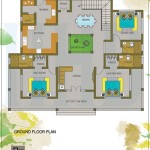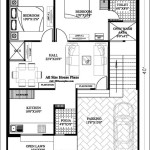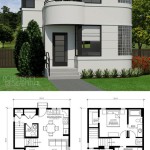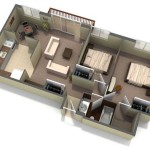Essential Aspects of Ecological House Plan Designs
In an era where environmental sustainability is paramount, ecological house plan designs have emerged as a solution to reduce our environmental footprint while enhancing our living spaces. These designs prioritize energy efficiency, environmental friendliness, and a harmonious relationship with nature. By incorporating key aspects into your home's plan, you can create a sustainable haven that promotes well-being and respects the planet.
Orientation and Site Selection
The orientation of your house plays a crucial role in its energy efficiency. By positioning the house to take advantage of natural light and breezes, you can reduce the need for artificial lighting and cooling systems. Consider the prevailing wind patterns and solar exposure to optimize passive heating and cooling strategies.
Sustainable Building Materials
The materials used in the construction of your home significantly impact its environmental impact. Choose sustainable options such as recycled or renewable materials, low-VOC paints and finishes, and efficient insulation to minimize your carbon footprint and create a healthier indoor environment.
Energy-Efficient Systems
Incorporate energy-efficient appliances, lighting fixtures, and HVAC systems into your design. Look for Energy Star-rated products that meet high standards of energy conservation. Consider solar panels, geothermal heating, or other renewable energy sources to further reduce your reliance on fossil fuels.
Water Conservation Measures
Water conservation is essential for ecological living. Implement low-flow toilets, faucets, and showerheads to reduce water consumption. Harvest rainwater with a rainwater collection system for irrigation and other non-potable uses. Consider drought-tolerant landscaping to minimize outdoor water requirements.
Natural Lighting and Ventilation
Maximize natural lighting by incorporating large windows and skylights into your design. This reduces the need for artificial lighting and creates a brighter, more inviting living space. Ensure proper ventilation through cross-breezes and exhaust fans to maintain a comfortable indoor environment and reduce the risk of air pollution.
Indoor Air Quality
Prioritize indoor air quality by choosing non-toxic finishes and building materials. Utilize air purifiers and air exchange systems to filter out pollutants and promote a healthier living environment. Encourage proper ventilation and incorporate plants to improve indoor air quality naturally.
Ecological Landscaping
The landscaping around your home can complement its ecological design. Use native plants that require minimal water, fertilizers, and pesticides. Create wildlife habitats by planting a variety of species and incorporating water features. Consider permeable paving materials to reduce stormwater runoff and minimize your impact on the surrounding environment.
By incorporating these essential aspects into your ecological house plan design, you can create a sustainable and environmentally conscious living space that promotes well-being and respects the planet. These designs not only reduce your environmental footprint but also enhance your quality of life, creating a harmonious and healthy home for years to come.

Pin On Architectural Presentations Drawings Models Concepts

Eco Friendly Home Plans House Design

The Top 10 Sustainable Home Design Trends In 2024

Eco Design Energy Efficient Homes Greenmatch Co

25 Small Sustainable House Plans Cutaway Drawings Natural Building Blog Home
This Entirely Customizable Dwelling Unit Raises The Bar In Energy Efficient Green Home Market Place Plans By Leap Adaptive

The Top 10 Sustainable Home Design Trends In 2024

Eco Friendly Home Designs Salter Spiral Stair

Eco Friendly Single Floor Kerala Villa House Design Courtyard Plans

Eco House Plans Friendly Narrow Design








